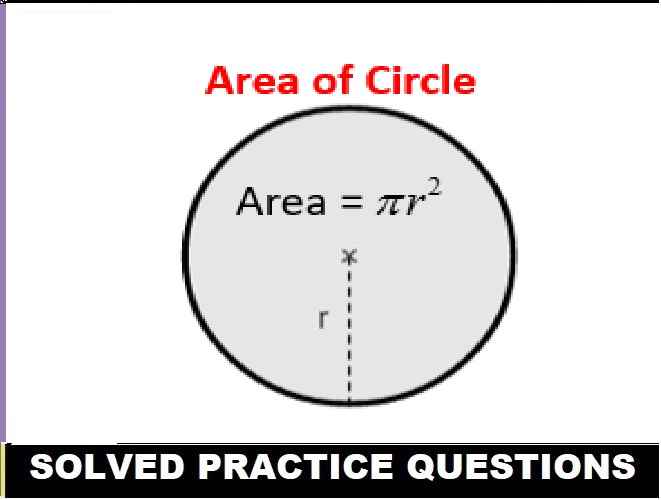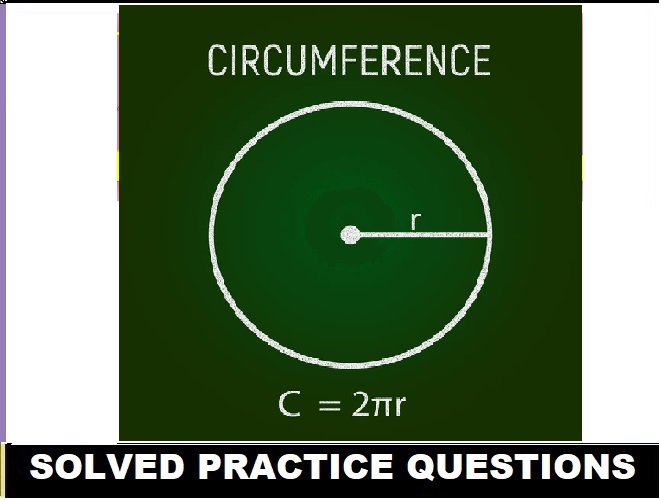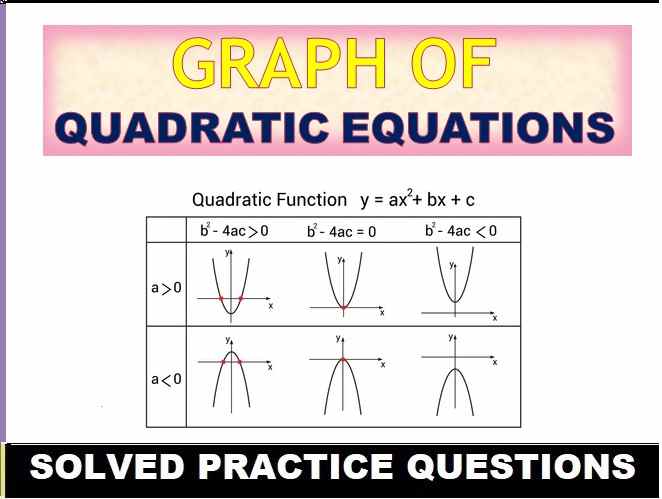MCQ Mole Concept and Stoichiometry for ICSE Class-10 Chemistry. These MCQ / Objective Type Questions is based on latest reduced syllabus according 2021-22 session on bifurcated pattern. Main motto of MCQ Type Question is cracking the next upcoming exam of council. Visit official website CISCE for detail information about ICSE Board Class-10 Chemistry .
MCQ Type Questions Mole Concept and Stoichiometry for ICSE Class-10 Chemistry
| Board | ICSE |
| Class | 10th (X) |
| Subject | Chemistry |
| Chapter | Mole Concept and Stoichiometry |
| Syllabus | on bifurcated syllabus (after reduction) |
| Session | 2021-22 |
| Topic | MCQ / Objective Type Question |
ICSE Class-10 Chemistry MCQ Type Questions of Mole Concept and Stoichiometry
Question-1 The number of atoms present in one molecule of a substance is its
(a) Molecularity
(b) Atomicity
(c) Ion
(d) All of the above
Answer:( b) Atomicity
Question 2: The number of moles in 52 g of He is-
(a) 1
(b) 13
(c) 26
(d) 52
Answer: (b) 13
Question 3: The mass of one mole of electrons is:
(a) 8.0 × 10-25 g
(b) 8.4 × 10-26 g
(c) 8.5 × 10-27 g
(d) None of the above
Answer: (d) None of the above
Question 4: The number of atoms constituting a molecule is called ________.
(a) Molarity
(b) Atomicity
(c) Normality
(d) Valency
Answer: (b) Atomicity
Question 5: What is the number of particles present in 1 mole of any substance?
(a) 6.022 × 1023
(a) 6.023 × 10-22
(a) 6.022 × 10-23
(a) 6.023 × 1022
Answer: (a) 6.022 × 1023
Question 6: The Molecular mass of HNO3 is ______________.
(a) 61 u
(b) 62 u
(c) 63 u
(d) 64 u
Answer: (c) 63 u
Question 7: In CO2, C and O2 are present in the ratio ______ by mass
(a) 1 : 8
(b) 8 : 1
(c) 8 : 3
(d) 3 : 8
Answer: (d) 3 : 8
Question 8: Molar volume is equal to
(a) 22.41 L at NTP
(b) 2.241 L at NTP
(c) 29.27 L at NTP
(d) 1.03 L at NTP
Answer: (a) 22.41 L at NTP
Question 9: The percentage of carbon in glucose is
(a) 40%
(b) 53%
(c) 45%
(d) 55%
Answer: (a) 40%
Question 10: The number of Oxygen atoms in 64 grams of Oxygen gas is
(a) 6.023 × 1023
(b) 16.023 × 1023
(c) 24.092 × 1023
(d) 6.023 × 1032
Answer: (a) 40%
Question 11: The weight of sugar present in 4 litres of 0.123 M solution is
(a) 85 g
(b) 684 g
(c) 171 g
(d) 342 g
Answer: (c) 171 g
Question 12: According to Avogadro’s Hypothesis equal volumes of two gases under the same conditions of temperature and pressure contain
(a) Equal number of molecules
(b) Equal number of atoms
(c) Equal number of ions
(d) Equal number of electrons
Answer: (a) Equal number of molecules
Question 13: How many molecules are there in 1 litter of any gas at S.T.P.?
(a) 0.27 × 1023 molecules
(b) 6.023 × 1023 molecules
(c) 2.7 × 1023 molecules
(d) 0.6023 × 1023 molecules
Answer: (a) 0.27 × 1023 molecules
Question 14: Among the following, the one has highest mass is
(a) 40 g of Fe
(b) 6 moles of N2 at NTP
(c) 0.2 g of silver
(d) 1023 atoms of carbon
Answer: (b) 6 moles of N2 at NTP
Question 15: 8 g of NaOH is dissolved in 18 g of H2O Mole fraction of NaOH in solution and molality (in mol kg-1) of the solution respectively are
(a) 0.2, 11.11
(b) 0.167, 22.20
(c) 0.2, 22.20
(d) 0.167, 11.11
Answer: (d) 0.167, 11.11
Question 16: Copper consists of two isotopes A and B, whose atomic masses are 62.93 amu and 64.93 amu respectively. The atomic mass of copper is 63.55 amu. Calculate the percentage of the isotopes A and B.
(a) A (51%) & B (49 %)
(b) A (60%) & B (40 %)
(c) A (69%) & B (31%)
(d) A (1%) & B (99 %)
Answer: (c) A (69%) & B (31%)
Question 17: Atomic mass of Carbon is 12 and that of Helium is 4. State which of the following statements is true for 1 mole of each of the elements?
(a) 1 mole of Carbon will contain 3 times more atoms than 1 mole of Helium.
(b) 1 mole of Helium will contain 3 times more atoms than 1 mole of Carbon.
(c) 1 mole of Carbon will contain one-third the number of atoms present in 1 mole of Helium.
(d) 1 mole of Carbon will contain the same number of atoms as present in 1 mole of Helium.
Answer: (d) 1 mole of Carbon will contain the same number of atoms as present in 1 mole of Helium.
Question 18: Which of the following sample contains the maximum number of atoms –
(a) 1 mg of C4H10
(b) 1 mg of N2
(c) 1 mg of Na
(d) 1 mL of water
Answer: (d) 1 mL of water
Question 19: The hydrated salt, Na2SO4. nH2O undergoes 55.9% loss in weight on heating and becomes anhydrous. The value of n will be –
(a) 5
(b) 3
(c) 7
(d) 10
Answer: (d) 10
Question 20: Number of mole of 1 m³ gas at NTP are –
(a) 44.6
(b) 40.6
(c) 42.6
(d) 48.6
Answer: (a) 44.6
Question 21: Insulin contains 3.4% sulphur. The minimum molecular weight of insulin is –
(a) 941.176 u
(b) 944 u
(c) 945.27 u
(d) None of these
Answer: (a) 941.176 u
Question 22: Number of a atoms of sulphur present in 80.25 g of sulphur is – (At. wt. of S = 32)
(a) 32
(b) 5
(c) 10
(d) 2.5
Answer: (d) 2.5
Question 23: ‘X’ g of sulphur has as many atoms as in 3 g of carbon. The value of ‘X’ is –
(a) 4
(b) 8
(c) 16
(d) 32
Answer: (b) 8
Question 24: What will be the volume in litres of 20 g of hydrogen gas at STP ?
(a) 22.4 litres
(b) 2.24 litres
(c) 224 litres
(d) 0.224 litres
Answer: (c) 224 litres
Question 25: Which one of the following statements would be incorrect to use ?
(a) A mole of an element
(b) A mole of a compound
(c) An atom of an element
(d) An atom of a compound.
Answer: (d) An atom of a compound.
Question 1: A/An……. .is the smallest unit of matter, which may or may not have an independent existence, but always takes part in a chemical reaction.
(a) molecule
(b) compound
(c) atom
(d) particle
Answer: (c) atom
Question 2: The temperature at which all molecular motion ceases is……….
(a) Absolute zero
(b) Standard temperature
(c) Both (a) and (b)
(d) None of these
Answer: (a) Absolute zero
Question 3: The ratio of certain mass of a gas or vapour to the mass of same volume of hydrogen is it’s..
(a) Vapour density
(b) Empirical formula
(c) Molecular formula
(d) Percentage composition
Answer: (a) Vapour density
Question 4: If two compounds have the same empirical formula but different molecular formula, they must have
(a) Different percentage composition.
(b) Different molecular weights.
(c) Same viscosity
(d) Same vapour density.
Answer: (b) Different molecular weights.
Question 5: When two compounds R and S have same percentage composition. Then the compounds R and S are:
(a) identical
(b) isomer
(c) either identical or isomer
(d) All are correct
Answer: (d) All are correct
Question 6: What indicates the actual number of constituent atoms in a molecule?
(a) Empirical formula
(b) Molecular formula
(c) Empirical mass
(d) Molecular mass
Answer: (b) Molecular formula
Question 7: If two compounds have the same empirical formula but different molecular formulae, they must have
(a) different percentage composition.
(b) different molecular mass.
(c) same viscosity.
(d) same vapour density.
Answer: (b) different molecular mass.
Question 8: The starting material which takes part in chemical reaction is called:
(a) product
(b) catalyst
(c) reactant
(d) starter
Answer: (c) reactant
Question 9: The formula which gives the simple ratio of each kind of atoms present in the molecule of a compound is called
(a) Molecular Formula
(b) Empirical Formula
(c) Structural Formula
(d) None of these
Answer: (b) Empirical Formula
Question 10: The formula which expresses the actual number of each kind of atom present in the molecule of a compound is called
(a) Empirical Formula
(b) Molecular Formula
(c) Structural Formula
(d) None of these
Answer: (b) Molecular Formula
Question 11: Relation between vapour density and molecular weight
(a) Molecular weight -2/ vapour density
(b) Molecular weight 2 x vapour density
(c) Molecular weight x 2 Vapour density\
(d) None of these
Answer: (b) Molecular weight 2 x vapour density
Question 12: The empirical formula and molecular mass of a compound are CH2O and 180 g respectively. What will be the molecular formula of the compound?
(a) C9H18O9
(b) CH2O
(c) C6H12O6
(d) C2H4OC9
Answer: (c) C6H12O6
Question 13: Naphthalene contains 93.75% C and the rest hydrogen. Molecular mass of naphthalene is 128 Find its empirical formula.
(a) C5H4
(b) C6H4
(c) C5H10
(d) C5H2
Answer: (a) C5H4
Question 14: An organic compound contains carbon, hydrogen and oxygen. Its elemental analysis gave Carbon 38.7% and Hydrogen 9.67%. The empirical formula of the compound would be
(a) CH3O
(b) CH2O
(c) CHO
(d) CH4O
Answer: (a) CH3O
Question 15: What is the percentage of water in CuSO4.5H20
(a) 12%
(b) 36%
(c) 14%
(d) 18%
Answer: (b) 36%
Question 16: The vapour density of carbon dioxide [C- 12, 0 16] is:
(a) 12
(b) 16
(c) 4
(d) 22
Answer: (d) 22
Question 17: The weight of lime obtained by heating 200 Kg of 95 % pure lime stone is
(a) 984 Kg
(b) 106.4 kg
(c) 122.6 kg
(d) 112.8 kg
Answer: (b) 106.4 kg
Question 18: An organic compound contains carbon, hydrogen and oxygen. Its elemental analysis gave C, 38.7% and H, 9.67%. The empirical formula of the
compound would be:
(a) CHO
(b) CH4O
(c) CH3O
(d) CH2O
Answer: (c) CH3O
Question 19: If vapour density of the gas is 39 and has molecular formula (CH)n. Then what should be the formula of the compound
(a) C3H3
(b) C4H4
(c) C2H2
(d) C6H6
Answer: (d) C6H6
Question 20: Impure sample ot ZnS contains 42.34% Zn. What is the percentage of pure ZnS in the sample?
(a) 67%
(b) 63%
(c) 58%
(d) 37%
Answer: (b) 63%
Question 21: Calculate the value of x, when the hydrated salt Na2CO3.xH20 undergoes 63% loss in mass on heating and becomes anhydrous.
(a) 3
(b) 5
(c) 7
(d) 10
Answer: (d) 10
Question 22: Percentage of nitrogen in urea is about:
(a) 85%
(b) 18%
(c) 46%
(d) 28%
Answer: (c) 46%
Question 23: In Na2CO3 percentage mass of oxygen is:
(a) 62.93
(b) 45.3
(c) 40.3
(d) 59.6
Answer: (b) 45.3
Question 24: Percentage of oxygen (O] in sulphur dioxide [SO2]
(a) 2.5
(b) 60
(c) 50
(d) 40
Answer: (c) 50
Question 25: Vapour density of a gas is 22. What is its molecular mass?
(a) 23
(b) 22
(c) 44
(d) 11
Answer: (c) 44
Question-26. Equal volumes of all………under similar conditions of temperature and pressure, contain equal number of molecules.
(a) Gases
(b) Liquids
(c) Solids
(d) All of the above
Answer: (a) Gases
Question-27. The volume occupied by 1 mole of gas at STP is :
(a) 2·24 litres
(b) 22·4 litres
(c) 2·42 litres
(d) 2·44 litres
(a) Avogadro’s law
(b) Gay Lussac’s Law
(c) Mole Law
(d) Law of conservation of mass
Answer: (a) Avogadro’s law
Question-29. One atomic mass unit is how much part the mass of carbon-12 atoms ?
(a) 1/4
(b) 1/12
(c) 1/8
(d) 1/16
Answer: (b) 1/12
Question-30. The vapour density of carbon dioxide [C = 12, O = 16] is :
(a) 12
(b) 16
(c) 44
(d) 22
Answer: (d) 22
Question-31. The empirical formula of hexane is :
(a) C2H7
(b) C5H8
(c) C3H8
(d) C4H7
Answer: (c) C3H8
Question-32. If empirical formula of an organic compound is CH2O then its molecular formula can be :
(a) C2H2O2
(b) C2H4O
(c) C3H6O
(d) C6H12O6
Answer: (d) C6H12O6
–: End of MCQ Mole Concept and Stoichiometry for ICSE Class-10 Chemistry :-
-: also visit :-
- MCQ Type Questions for ICSE Class-10
- ICSE Class-10 Text book Solutions, Notes , Syllabus, Paper, Notes
Please share with your ICSE friends if it is helpful
Thanks


